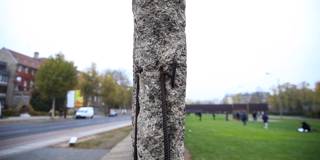The past stalked Europe in 2014. When the year started, the centennial of the Great War’s outbreak attracted much commemorative energy; and, as it progressed, disturbing parallels appeared – not to 1914, but to some of the nastier features of the interwar years.
NEW YORK – The past stalked Europe in 2014. When the year started, the centennial of the Great War’s outbreak attracted much commemorative energy. But, as it progressed, disturbing parallels appeared – not to 1914, but to some of the nastier features of the interwar years.
From Scotland and Catalonia to the borders of Ukraine, the politics of nationality flared, while Europe’s economy stagnated – hostage to a German inflation phobia that dates back to 1923. And, as the year unfolded, a new geopolitical tug of war between the continent’s two early-twentieth-century giants, Germany and Russia, became apparent, while Europe’s amnesiac political elite seemed to be fumbling on one front after another.
To anyone who recalls Danzig and the Sudetenland – the endless nationality claims and counter-claims that triggered World War II in the borderlands of Eastern Europe – Russian President Vladimir Putin’s revanchism in eastern Ukraine’s Donbas region in 2014 has a disturbingly familiar ring to it. His rhetoric of humiliation and encirclement, the instrumental talk of minority rights, and the Kremlin’s use of local proxies, with all of the uncertainties that accompany reliance on such actors – all of this was reminiscent of nothing so much as interwar Germany’s own irredentist policies.

NEW YORK – The past stalked Europe in 2014. When the year started, the centennial of the Great War’s outbreak attracted much commemorative energy. But, as it progressed, disturbing parallels appeared – not to 1914, but to some of the nastier features of the interwar years.
From Scotland and Catalonia to the borders of Ukraine, the politics of nationality flared, while Europe’s economy stagnated – hostage to a German inflation phobia that dates back to 1923. And, as the year unfolded, a new geopolitical tug of war between the continent’s two early-twentieth-century giants, Germany and Russia, became apparent, while Europe’s amnesiac political elite seemed to be fumbling on one front after another.
To anyone who recalls Danzig and the Sudetenland – the endless nationality claims and counter-claims that triggered World War II in the borderlands of Eastern Europe – Russian President Vladimir Putin’s revanchism in eastern Ukraine’s Donbas region in 2014 has a disturbingly familiar ring to it. His rhetoric of humiliation and encirclement, the instrumental talk of minority rights, and the Kremlin’s use of local proxies, with all of the uncertainties that accompany reliance on such actors – all of this was reminiscent of nothing so much as interwar Germany’s own irredentist policies.